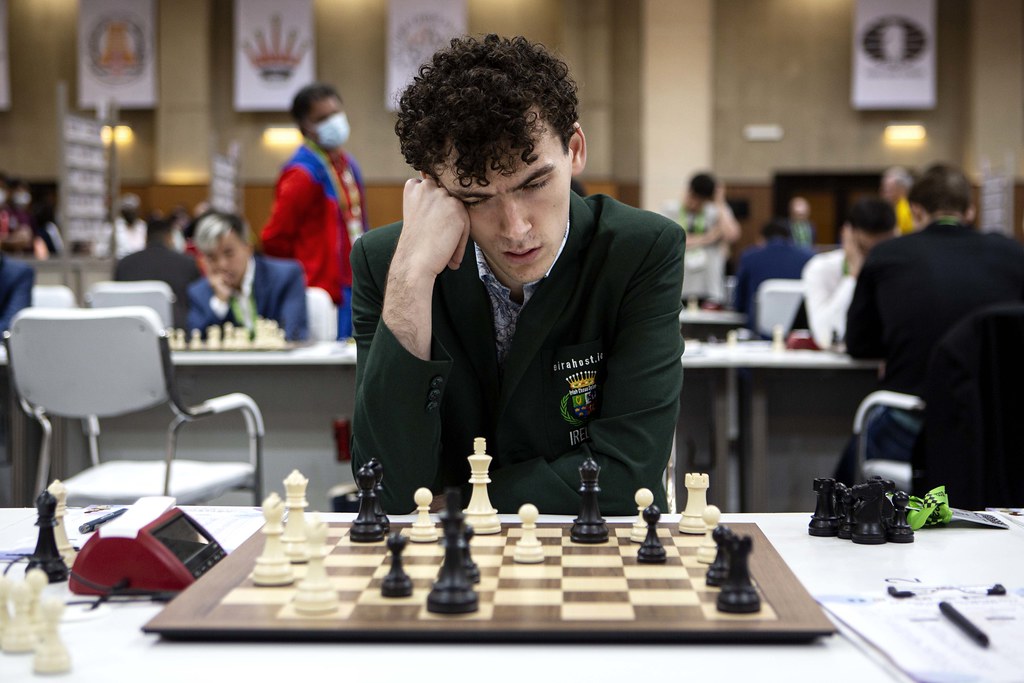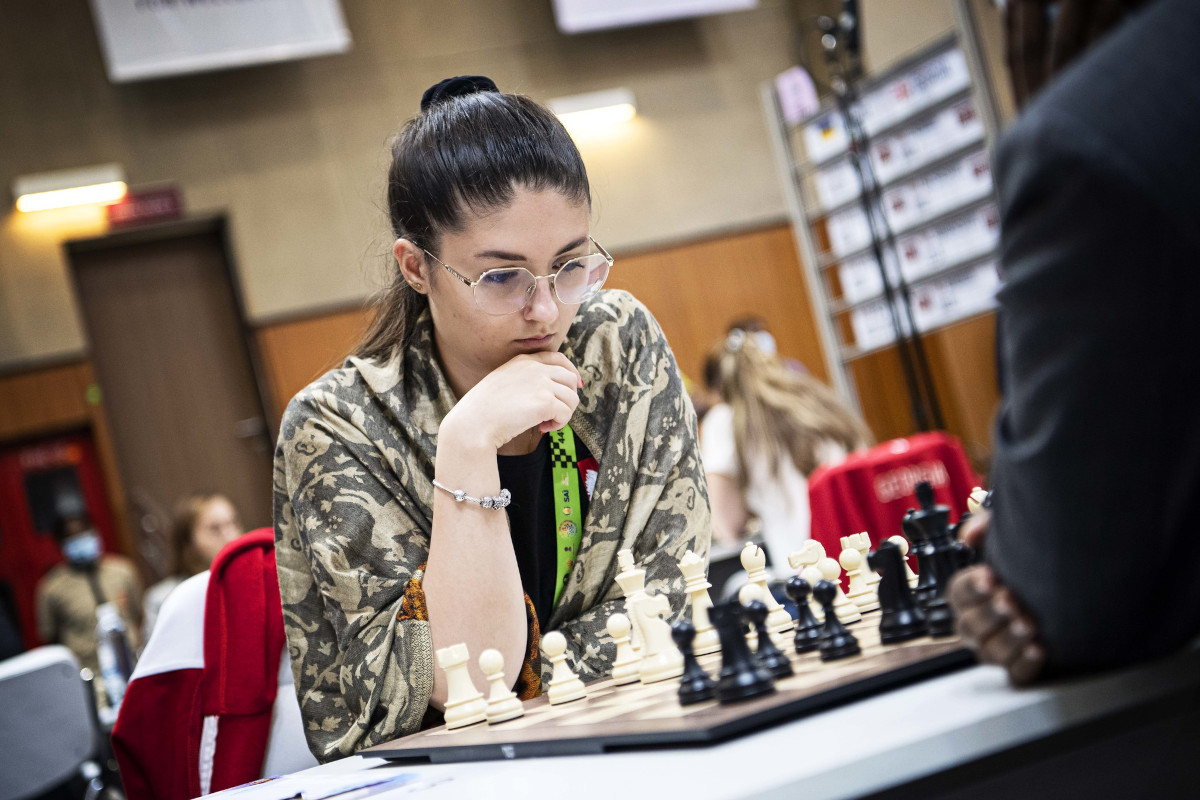It is impossible to do credit to every heroic performance by a player, so any omissions made are by no means meant to diminish them. That said, what follows are a few of the amazing results by players who are not beneficiaries of the grandmaster title.
'Robocop'
Such was the title given tongue-in-cheek by GM Alex Yermolinsky to the brilliant run by Irish IM Conor Murphy. The sobriquet was in reference to the classic science fiction film from 1987 in which the cyborg discovers he was once a police officer named Murphy.

GM Yermolinsky's comment after IM Murphy's 7.0/7 start
For many years now, the Irish team has enjoyed the stature and strength of one grandmaster, Alexander Baburin, the editor of the excellent, but defunct, daily Chess Today.

IM Conor Murphy in deep thought (photo: Madelene Belinki/Olympiad)
It seems quite clear now that he will be rejoined soon by Ireland's first homegrown grandmaster, whose performance in Chennai deserves nothing but praise. The 23-year-old International Master not only scored a GM norm he did so with generous excess. Indeed his ratings performance of 2704 Elo was a 'mere' 300 Elo above his actual 2404 FIDE rating. An absolutely stellar performance which Leonard Barden called "the finest Olympiad performance by an Irishman".
9 in 9
Such was her run, that after Gukesh finally gave up a draw in round nine, WIM Oliwia Kiolbasa from Poland became the only player to stretch that perfect score to a full nine rounds. Her performance was beyond stellar and not only did she earn an IM norm, but her tournament ratings performance of 2565 Elo was the highest in the Women's competition.

This is what perfection looks like (photo: Stev Bonhage/Olympiad)
One of her most spectacular results was precisely in round nine when Poland faced the top rated Team India.
Here is the deep analysis provided by Wolfram Schön and published in Karsten Mueller's wonderful roundups of the brilliant endgames in Chennai.
Chess Tactics are the art of combat command. When tactics dominate concrete action is required immediately in order to put a plan into practice or to grab an opportunity. However in complicated positions and with determined resistance basic tactics are often insufficient and intuition, imagination and precision are necessary.
Board no.1 and untitled
One of the surprises of the Olympiad was unquestionably the top board of the women's Dutch team, Eline Roebers. The 16-year-old rated 2344 FIDE has been on the fast track to rise and showed her chops once again.
Again? In 2020 she became the first female Dutch player to win a category in a World Youth even taking gold in the Under-14 section, but what has really made her stand out is her fighting ability and nerves.

Eline Roebers (photo: Lennart Ootes/Olympiad)
Consider this: in August 2021, rated just 2173, she took clear first in the overall Bruges Open ahead of several IMS and a GM, thanks to a clutch win in the last round against IM Niels Ondersteijn. Then in November she scored 7.0/9 for the Dutch team in the European Women's Team Championship for her first IM norm with a 2504 performance. In January she won the West German Open, again ahead of several IMs and a GM thanks to a crucial last round win. Now at the Olympiad, the young female warrior once again brought that spirit and scored 7.5/10 for a 2532 performance (another IM norm) and a silver medal for board one, losing gold to the legendary GM Pia Cramling on tiebreak.
An overview of her games shows that same spunk that has brought her so far, with dramatic swings but somehow always managing to avert capsizing the ship.
Zhemba from Zimbabwe
In the list of norms achieved at the Olympiad, one stands out in the Open section: Jemusse Zhemba, board four of the team from Zimbabwe. The 26-year-old is not only untitled, but with a rating of 2162 FIDE, one would be forgiven for expecting nothing to write home about. However this untitled hero for his team will be able to do just that, because he not only notched up 7.5/10 points but even scored an IM norm for his trouble with a 2421 FIDE performance.

Jemusse Zhemba went above and beyond his duty with a stellar result (photo: Mark Livshitz/Olympiad)
Links




























